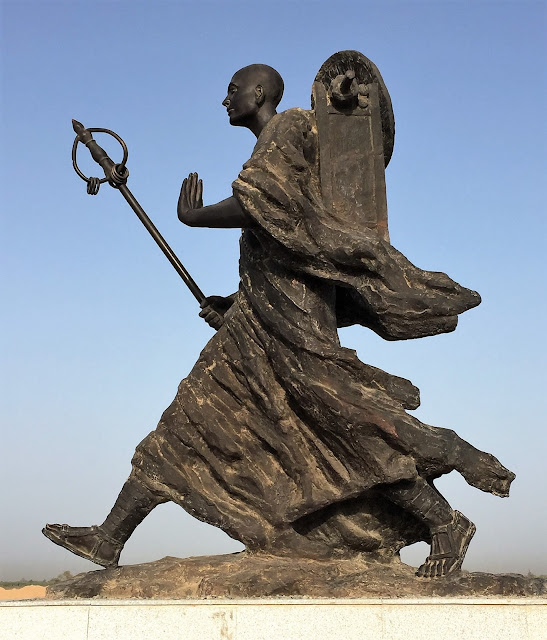We didn't have a lot of time left in Urumqi after we visited the museum because we had to catch a plane to Kazakhstan, but there was enough time to spend an hour in the "International Grand Bazaar Urumqi." Opened in 2003, it has lots of booths and stalls selling clothing, jewelry, pottery, nuts, fruit, local cuisine, rugs, musical instruments, and just about everything you can imagine, so an hour was not nearly enough time, especially because Bob was On A Mission to find and eat some horse meat.
There are some very distinct things about this market that set it apart from other Asian markets we've been to. The first and most obvious is the Islamic architecture.
There is a grand entrance that includes a huge tower and a mosque.
The tower near the entrance looks like some of the centuries-old minarets we had seen in other places, but it's only fourteen years old. Tourists can pay $7-$8 to climb the stairs to the observation deck at the top, but unfortunately we didn't have time to go inside:




















































